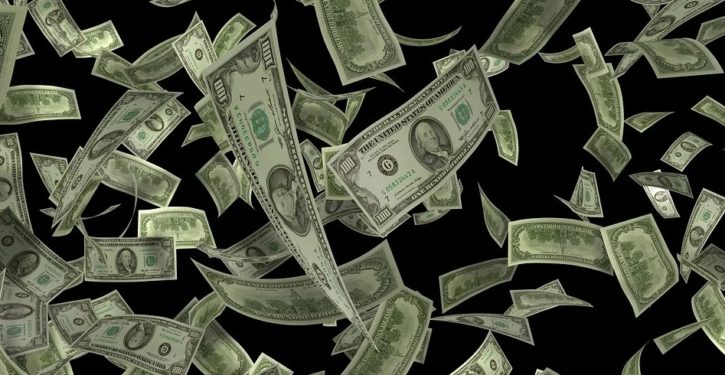
By Charles Kolb
The American economics profession appears roiled over whether today’s inflation is temporary or long-term. For Americans facing the worst inflation in nearly four decades, this debate is beside the point: today’s inflation is eroding living standards, erasing recent wage gains, and inflicting pain on millions of American households.
What factors created this situation? Basically four:
- For over a decade, the Federal Reserve kept its federal funds rate at the zero bound, effectively establishing negative interest rates that penalize savers and people living on fixed incomes while rewarding instant-gratification spending.
- Since the 2008-2009 Great Recession, the Fed’s numerous rounds of Quantitative Easing (printing money to support its purchases of bonds and mortgage-backed securities to sustain Wall Street and the nation’s housing market) have contributed to excessive monetary liquidity here and globally. The Fed’s balance sheet (which it must unwind at some future point) now tops $9 trillion.
- Bipartisan annual budget deficits have ballooned the national debt to over $30 trillion, a figure representing 133% of GDP, the highest percentage since WWII.
- Emergency COVID relief legislation has flooded the nation with more liquidity than needed to offset the pandemic’s economic drag.
These four factors have suppressed traditional market-based interactions that would have permitted healthy, real asset-price discovery rather than today’s inflated asset prices.
We now have asset bubbles in housing, equities, some commodities and crypto-currencies. Many stocks remain overpriced with wildly unsustainable price/earnings ratios.
Interest rates reflect the price of borrowing, i.e., the price of money. When interest rates are negative, savers are effectively paying banks to hold their money. Conversely, banks are paying spenders to borrow. These situations and behaviors are not sustainable.
This “cost-free” borrowing has distorted housing, equities, and commodities markets long before the Ukraine war further disrupted supply chains and helped sustain today’s rising inflation. Biden’s war on fossil fuels has further inflated energy costs.
Many economists argued that President Biden’s initial multi-trillion-dollar “Build Back Better” legislation was needed, in addition to his bipartisan $1.2 trillion infrastructure bill, to address important national priorities such as universal pre-K and healthcare investments. Some Biden administration supporters argued that this legislation would help reduce inflation by lowering childcare and prescription drug costs.
Fortunately, given Democratic defections in the Senate, this legislation was scaled back as budget deficits and inflation rose together. Now, apparently, the Biden administration has abandoned “Build Back Better” altogether.
Imagine what today’s inflation numbers would be if Biden’s original $5 trillion “Build Back Better” spending plan had become law, on top of the billions of dollars still unspent from prior COVID-relief legislation and the bipartisan infrastructure legislation.
I have a close friend whose 22-year-old daughter received $5,000 in COVID-relief money. At the time, this young woman was a college senior with no student-loan debt; her room, board, books and amenities were paid by her parents; and, to boot, she was earning roughly $600 each month as a residential adviser.
To her, the $5,000 was free money. Didn’t she defraud American taxpayers?
How many other examples like this exist? Organizations with millions of dollars in reserves got “loans” that have now been forgiven. The economy was showered with helicopter money that helped ignite today’s inflationary pressures.
Some months ago, former Obama Treasury Secretary and Harvard economist Larry Summers warned that inflation would become a problem and that it would not be “transitory.” He was correct. Summers now explains that whenever inflation has exceeded four percent and unemployment has dipped below four percent, the U.S. economy has experienced a recession within two years.
The Fed has begun signaling that it may have to move much faster with interest rate hikes to break today’s inflationary pressures. What will happen when the Fed’s overnight federal funds rate reaches the more “normal” trend rate of four percent?
Financing a $30 trillion national debt at four percent or higher will be enormously expensive and jeopardize other important national spending priorities, such as the increased defense spending needed to counter growing international threats.
Wall Street’s virtually risk-free, money-making arbitrage will cease. Mortgage interest rates have already reached five percent, and consumers can expect higher credit-card interest rates.
The era of free money is now finally ending. What we’re about to discover is just how much damage these profligate monetary and fiscal policies have created for the American and global economies.
The reckoning is underway. Unfortunately, for them, Biden and the Democrats now control Washington. That’s why they are increasingly fearful about this November’s midterm elections.
Charles Kolb served as Deputy Assistant to the President for Domestic Policy from 1990-1992 in the George H.W. Bush White House


